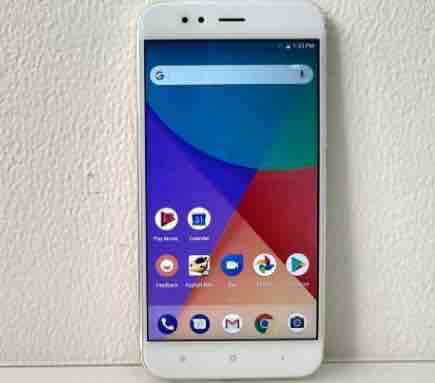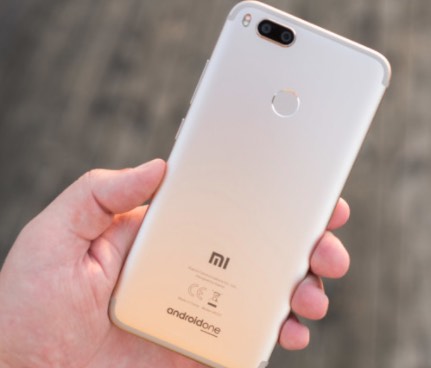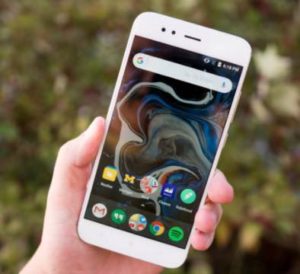Best Android Phone under 15000 in December 2017
Best Android phone under 15000 in December 2017. The best Android Phone under 15000 in December 2017 is giving tough competition to even costlier phones. With this article i will brief you about the Latest trend in the Android market of India. The 1500 INR is a good budget to look for and Android device in India. Almost all the leading mobile manufacturers sell their products here. So, it is a tough competition for the sellers which gives extra benefits to the customers in a limited budget. Lets proceed and check for the details.
Also Read – The best way to Freeze Whatsapp last seen in Android phones.
Best Android Phone under 15000 in December 2017

It is important to note that instead of giving 2 – 3 options diplomatically i will tell you the best Android Phone under 15000 in December 2017.
As per my research and analysis, MI A1 is the Best Android Phone under 15000 in December 2017. The Android phone has a full-HD 5.5-inch display, a 2GHz octa-core processor, 4GB RAM, and 64GB storage. It comes along with a 3080mAh battery. There’s a 5-megapixel front camera, and 12-megapixel dual cameras on the back, which makes it a perfect pick in the best phones under INR. 15,000 segment. Lets read the details.
Mi A1 Features – The Best Android Phone under 15000 in December 2017
| Release date | September 2017 |
| Form factor | Touchscreen |
| Dimensions (mm) | 155.40 x 75.80 x 7.30 |
| Weight (g) | 168.00 |
| Battery capacity (mAh) | 3080 |
| Removable battery | No |
| Colours | Rose Gold, Gold, Black |
| SAR value | NA |
| Screen size (inches) | 5.50 |
| Touchscreen | Yes |
| Resolution | 1080×1920 pixels |
| Processor | 2GHz octa-core |
| Processor make | Qualcomm Snapdragon 625 |
| RAM | 4GB |
| Internal storage | 64GB |
| Expandable storage | Yes |
| Expandable storage type | microSD |
| Expandable storage up to (GB) | 128 |
| Rear camera | 12-megapixel |
| Flash | Yes |
| Front camera | 5-megapixel |
| Operating System | Android 7.1.2 |
| Wi-Fi | Yes |
| Wi-Fi standards supported | 802.11 a/b/g/n/ac |
| GPS | Yes |
| Bluetooth | Yes, v 4.20 |
| NFC | No |
| Infrared | Yes |
| USB OTG | Yes |
| Headphones | 3.5mm |
| FM | No |
| Number of SIMs | 2 |
| SIM 1 | |
| SIM Type | Nano-SIM |
| GSM/CDMA | GSM |
| 3G | Yes |
| 4G/ LTE | Yes |
| Supports 4G in India (Band 40) | Yes |
| SIM 2 | |
| SIM Type | Nano-SIM |
| GSM/CDMA | GSM |
| 3G | Yes |
| 4G/ LTE | Yes |
| Supports 4G in India (Band 40) | Yes |
| Compass/ Magnetometer | Yes |
| Proximity sensor | Yes |
| Accelerometer | Yes |
| Ambient light sensor | Yes |
| Gyroscope | Yes |
| Barometer | No |
| Temperature sensor | No |
Design

The Mi A1 has design elements in common with other Xiaomi devices, but feels like an elegantly crafted upgrade.
It offers a premium metallic feel and looks solid in construction. At 7.3mm, it is still quite slim. It’s 165 gram weight feels great in the hand. Although slightly wider, it fits nicely in the palm and has great ergonomics because of its round edges and sleek side profile.
At the back, the dual cameras protrude a bit— an aberration for Xiaomi devices— but it’s neither an eyesore nor a deal breaker. Below the cameras, in the center of the phone, is the Mi A1’s fingerprint reader. We found it to be on par with other devices in this price category.
Overall, the Mi A1 has a striking visual appeal with neat elements, like the nicely crafted speaker grille and the antenna lines at the back. I think that it is one of the best looking Xiaomi devices we’ve seen, ignoring the Mi MIX series of course.
I do have to mention that the rear of the Mi A1 is eerily similar to the iPhone 7 Plus. A lot of Chinese brands have followed this model over the past year, so we would have liked to see something more original, but again, it’s not a deal breaker.
Display

The 5.5-inch LTPS IPS display on the Mi A1 makes for a good design choice with 2.5D curved glass at the top. The Full HD display delivers crisp visuals and excellent contrast, with a pixel density of 403 ppi.
While the ample brightness results in good enough sunlight viewing, it is certainly not the best, especially because of the reflective display panel. Also, outdoors in the sun, the colors often appear washed out. There’s also no reading mode like on other MIUI-based Xiaomi devices of late.
The display on the Mi A1 is vivid and bright. Its graphics look great and its text is sharp. The color reproduction could be more accurate, but most users won’t notice unless they have it side-by-side with a better panel.
Performance
With the Mi A1, Xiaomi goes back to its trusted octa-core Qualcomm Snapdragon 625 processor, which also powers the Redmi Note 4 and Mi Max 2.
While some expected Xiaomi to go up the value chain and opt for the newer Snapdragon 630 or 660 SoC, or last year’s Snapdragon 626, the 625 is still a fair choice. For a mid-tier chipset, it offers a good balance of performance and efficiency, and keeps the pricing in check.
Clocked at 2 GHz and coupled with 4 GB of RAM, the Snapdragon 625 keeps the Mi A1 snappy and able to handle anything thrown at it in everyday usage. It is also powerful enough to handle most graphics-intensive games. The stock Android experience is definitely lighter on resources than MIUI, so you’ll enjoy a snappier experience overall than on the Redmi Note 4.
Xiaomi claims it uses dual pyrolytic graphite sheets to dissipate heat effectively, but the results are a mixed bag. While I didn’t face any problem during long gaming sessions, the phone can get a bit hot while charging or while using Google Maps for navigation during a long commute. We should not that this is not entirely abnormal, but certainly something to keep in mind.
Hardware

The Mi A1 packs in 64 GB of internal storage which should be enough for most people, though there is a microSD card slot so you can expand its capacity up to another 128 GB. You will have to give up one of the two nano SIM card slots to do so, however. A lot of people who use only one SIM or are content with 64 GB of storage won’t mind this, but there’s a vocal group of users who will hate the lack of flexibility.
The Mi A1 also sports an infrared emitter that works flawlessly with a variety of home appliances via the Mi Remote app. We always enjoy seeing this feature, as it has become quite rare in recent years.
Audio output through the single bottom-firing speaker is pretty good. The sound is loud, albeit slightly distorted. Overall, it’s about average for this price.
Battery Life
The Redmi Note 4 boasted an exceptional 4,000 mAh battery, but Xiaomi has kept the capacity modest with the Mi A at 3,080 mAh. Battery life was still very good in our testing, although not far above average. Standby times were especially impressive, possibly thanks to the various optimizations in stock Android.
Note that the battery life screenshots above represent Bailey’s experience while using the Mi A1 on a 3G network in the United States. We expect that actual battery life while using the device on a proper 4G network will be less impressive.
The Xiaomi Mi A1 also supports Qualcomm’s Quick Charge technology, and the bundled 2A charger replenishes the device from zero to 100% in less than two hours, which is good but not incredible.
Camera
The Xiaomi Mi A1 brings a dual camera setup to a mid-range smartphone. It’s not the first brand to do this, but it is the first one to offer 2x lossless optical zoom in its segment.
The camera setup includes a 12 MP wide-angle 26mm f/2.2 lens and another 12 MP 50mm f/2.6 telephoto lens, with a dual-tone LED flash.
In ideal lighting conditions, the camera on the Mi A1 manages to take some really good portrait shots with natural looking colors. Most shots had clearly defined edges and just the right blurring. In a few cases, it overdid the blurring, though. The landscape shots were also impressive and offered accurate color reproduction and good sharpness.
In low light conditions, photos lack detail and excessive noise creeps in. Unlike in daylight, these shots didn’t capture color well. The portrait mode is almost useless in low-light conditions, too. The lack of optical image stabilization is evident. Photos taken with the flash came out better, although I don’t usually prefer to take photos that way.
While the Mi A1 does have phase detection auto-focus (PDAF), it sometimes takes a moment before locking on to the subject. When it does, it is usually accurate even in difficult lighting conditions.
The 5 MP front camera takes quite good selfies and with face detection it locks on to your face in a snap. The details are fairly impressive in good lighting conditions, though it cannot be compared to some other smartphones in the market with a special focus on front camera optics.
Xiaomi claims that its portrait mode can match the performance of the iPhone 7 Plus and OnePlus 5, but that’s a stretch. For its price it is impressive and it nails depth-of-field shots. If you do well, you’d be able to manage some incredible portraits and bokeh shots from the Mi A1. Overall, apart from underwhelming low-light performance, the results on the dual cameras on the Mi A1 won’t disappoint you.
Software
The Mi A1 runs Android 7.1.1 Nougat in its unadulterated form. There are no add-ons or customizations, and Xiaomi only bundles three of its apps – Feedback, Mi Remote, and Mi Store. The camera app too is Xiaomi’s because the stock Android app does not support dual cameras yet.
And that’s that. You get all the goodness of stock Android Nougat, along with the assurance of regular security patches and an Android Oreo update before the end of the year. At the launch event in New Delhi, it was also announced that the Mi A1 will get Android P as and when it’s released.
That said, there’s nothing else an Android One device brings to the table compared to other devices from Nokia or Lenovo that offer a stock Android experience. Google offers unlimited high-quality storage for photos and videos on Google Photos, but not in original quality, which is pretty disappointing – that’s a Pixel exclusive.
At first, it was slightly disorienting to use a Xiaomi device without MIUI. The customization layer has been an integral part of the company’s devices. To its credit, Xiaomi has earned a lot of fans by working hard to bake in nifty add-ons and useful features to MIUI. In the end, it boils down to individual preference between two good approaches to the Android experience.
Final Verdict On Selecting the best android phone under 15000 in december 2017
Android One or not, the Mi A1 is a very capable device. Getting a stock Android experience with guaranteed updates, which essentially future-proofs device, just sweetens the deal. I’m not sure if Google contributes anything significant to this collaboration, but Xiaomi puts up a good showcase of its prowess. At ₹14,999 ($230) in India, the Mi A1 is close to the perfect smartphone for those on a budget. Surely i can confidently say Mi A1 is the Best Android Phone under 15000 in December 2017.





